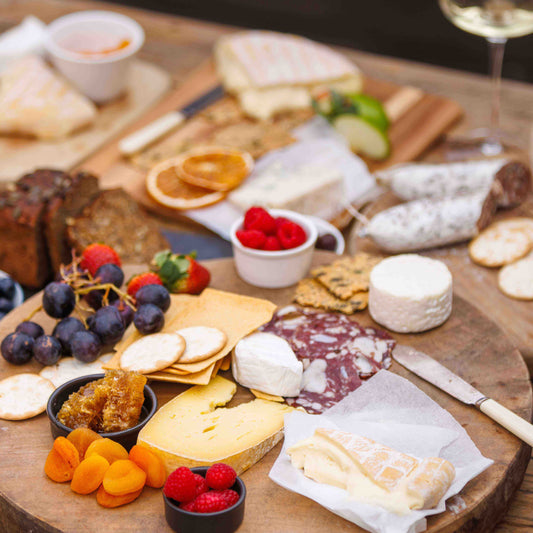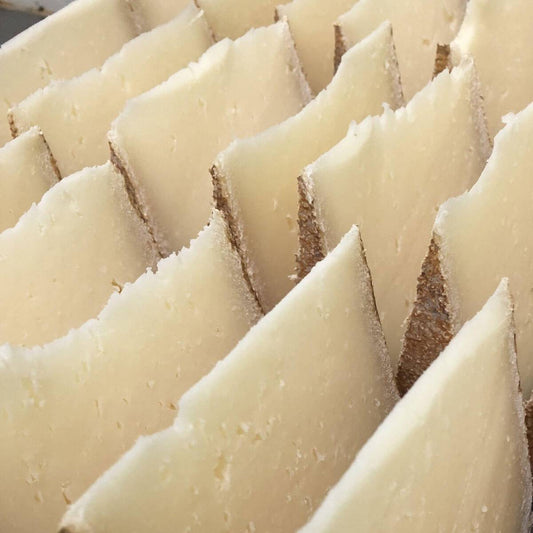
The Fascinating History of Dijon Mustard: From French Tradition to Global Staple
Share
Introduction
Dijon Mustard is one of the most beloved condiments in kitchens worldwide, but its history is as rich and flavourful as the mustard itself. Originating in the heart of Burgundy, France, Dijon Mustard has evolved over centuries, becoming synonymous with refined French cuisine. This blog takes you through the journey of Dijon Mustard—from its humble beginnings in medieval France to its present-day role in kitchens and gourmet dishes everywhere.

Origins of Mustard in France
Mustard production in France can be traced back to the Roman era, but it wasn't until the 13th century that mustard began to gain prominence in French cuisine. The city of Dijon, located in Burgundy, became particularly known for its mustard-making due to its ideal geographic location and access to high-quality mustard seeds and verjuice—a tart juice made from unripe grapes, which was a key ingredient in early mustard recipes.
In 1336, mustard became famous after being served at the grand wedding of Philip the Bold, Duke of Burgundy. The dish was so popular that the mustard trade began flourishing throughout the region, with Dijon taking centre stage as the mustard capital of France.
The Invention of Dijon Mustard
Dijon Mustard as we know it today was created in 1856 by Jean Naigeon, a mustard maker in Dijon. He replaced the traditional verjuice with white wine, giving the mustard its signature tang and smooth texture. This innovation made Dijon Mustard stand out among other mustard varieties and quickly gained popularity throughout France and beyond.
The mustard’s unique flavour profile, characterized by a balance of heat, tang, and smooth creaminess, became synonymous with sophistication and French culinary tradition. By the late 19th century, Dijon had officially established itself as the centre of mustard production.
Protected Production: The AOP Status
While Dijon mustard does not have Appellation d'Origine Protégée (AOP) status like certain wines or cheeses, the name "Dijon Mustard" has nonetheless become an indicator of high quality and a particular recipe. Many producers use mustard seeds sourced globally but adhere strictly to the traditional Dijon method, using white wine or wine vinegar to replicate the iconic taste.
Interestingly, unlike Moutarde de Bourgogne, which has AOP status and requires locally grown mustard seeds, Dijon Mustard can be produced outside of Dijon as long as it follows the original recipe. This has allowed it to become a widely produced condiment with a global footprint.
Modern-Day Dijon Mustard
Today, Dijon Mustard is enjoyed around the world as a versatile ingredient that enhances everything from simple sandwiches to elaborate gourmet meals. Producers like Newman’s have continued the tradition of crafting premium-quality Dijon Mustard, staying true to the original recipe while ensuring each jar delivers the distinctively smooth and tangy taste that people love.
Newman’s Dijon Mustard, available at Cheese Therapy, brings this traditional French flavour to your table, offering an authentic Dijon experience made with quality ingredients that honour the time-honoured Dijon method.
How Dijon Mustard Became a Kitchen Staple
The international appeal of Dijon Mustard lies in its versatility and its unique balance of pungency and creaminess. Throughout the 20th century, chefs across the world embraced Dijon Mustard as a staple for classic French dishes such as vinaigrettes, béarnaise sauce, and coq au vin. It became synonymous with refined cuisine, yet it is simple enough to enhance everyday dishes.
One of the key reasons for Dijon’s enduring popularity is its adaptability—whether mixed into sauces, used as a marinade base, or simply spread on a piece of bread, Dijon Mustard effortlessly enhances a wide variety of flavours.
Interesting Facts About Dijon Mustard
- Name Origins: The name "Dijon" is protected not by geographical exclusivity, but by adherence to a particular method and recipe, meaning Dijon Mustard can be made outside of Dijon, as long as it follows traditional guidelines.
- Mustard Museum: Dijon is home to La Moutarderie Fallot, one of the oldest mustard factories, and a popular museum where visitors can learn about the history of mustard-making in the region.
- Traditional Tools: Historically, mustard was ground with a rotating stone, known as a “moutardier,” to create the fine paste still used today.
Bring History to Your Table with Newman's Dijon Mustard
The rich history of Dijon Mustard is reflected in each jar of Newman’s Dijon Mustard, now available at Cheese Therapy. Made with the finest mustard seeds and a traditional recipe that dates back centuries, Newman’s Dijon Mustard brings an authentic French taste to your home. From adding a kick to your favourite sandwiches to being an essential ingredient in classic French vinaigrettes, it’s the perfect way to enhance your cooking.
Try Newman's Dijon Mustard Today
Conclusion
Dijon Mustard has come a long way from its medieval roots to become a globally beloved condiment. Its story is one of tradition, innovation, and unmatched versatility, making it a staple in kitchens around the world. By bringing Newman’s Dijon Mustard into your kitchen, you’re not only adding a classic French flavour to your meals but also connecting with centuries of rich culinary history.

















